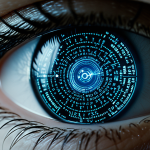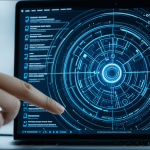Understanding Quantum Computing and Its Capabilities
Quantum computing fundamentally differs from classical computing through its use of qubits, which leverage quantum phenomena like superposition and entanglement. Unlike classical bits that hold values of 0 or 1, qubits can exist in multiple states simultaneously due to superposition, vastly expanding computational possibilities. Entanglement enables qubits to be interconnected such that the state of one instantly influences another, no matter the distance, enhancing processing speed and complexity.
These core principles allow quantum computers to perform certain calculations exponentially faster than classical machines. For example, they can explore numerous solutions at once rather than sequentially, unlocking the potential to solve problems previously deemed intractable. This potential of quantum technology is especially significant in fields involving large datasets, optimization, and complex simulations.
Also to discover : What Technological Advances Are Shaping the Future of UK Computing?
Understanding quantum computing fundamentals is vital as this technology moves from theory to practical implementation. Its distinctive operational model promises to revolutionize computing power, but unlocking this potential requires mastering the delicate control of qubits and mitigating errors inherent in quantum systems. As research advances, the capabilities of quantum computers will continue to challenge existing paradigms and fuel innovation.
Understanding Quantum Computing and Its Capabilities
Quantum computing fundamentally differs from classical computing by leveraging the principles of quantum mechanics rather than binary bits. Where classical computers use bits that are either 0 or 1, quantum computers use qubits. Qubits can exist in multiple states simultaneously thanks to superposition, allowing quantum systems to process a vast number of possibilities concurrently.
This might interest you : How Are Emerging Technologies Reshaping the Future of UK’s Digital Landscape?
Another core principle essential to quantum computing is entanglement, which connects qubits in a way that the state of one instantly influences the state of another, regardless of distance. This phenomenon enables quantum computers to perform complex calculations at speeds unattainable by classical machines.
These unique attributes grant quantum computers potential computing power exponentially greater in solving problems like optimization, cryptanalysis, and simulation of quantum systems. Their capabilities challenge existing computational boundaries, promising groundbreaking advancements in diverse fields. Yet, understanding these fundamentals is critical to grasping how quantum technology will reshape computing and cybersecurity landscapes.
Quantum Computing’s Threat to Modern Encryption
The quantum threat to encryption arises because quantum computers can exploit algorithms like Shor’s Algorithm to efficiently factor large numbers and solve discrete logarithms. This capability directly undermines widely used encryption protocols such as RSA and ECC, which rely on the difficulty of these problems to secure data. Unlike classical computers, quantum systems can perform these calculations exponentially faster, posing a fundamental challenge to current cryptographic methods.
Current cryptography challenges stem from the fact that existing security protocols, while robust against classical attacks, are vulnerable once sufficiently powerful quantum computers emerge. The strength of modern encryption depends on mathematical problems that quantum algorithms can break in feasible timeframes. This means encrypted communications, digital signatures, and secure transactions face serious risks.
Experts predict that the quantum threat to encryption could become practical within the next 10 to 20 years, contingent on advancements in qubit coherence and error correction. Organizations must therefore understand not just the potential of quantum technology to revolutionize computing but its capability to disrupt information security. Preparing for this involves recognizing vulnerabilities now and pushing forward with quantum-resistant methods to safeguard data before current protocols become obsolete.
Quantum Computing’s Threat to Modern Encryption
Quantum computing presents a significant quantum threat to encryption by exploiting algorithms such as Shor’s Algorithm, which can efficiently factor large numbers and solve discrete logarithms. This capability directly challenges widely used cryptographic protocols like RSA and ECC, which rely on these problems’ classical computational difficulty. Unlike classical computers, quantum machines leverage quantum computing fundamentals—notably qubits in superposition and entanglement—to process vast solution spaces simultaneously, enabling them to break current security protocols much faster.
Current encryption methods become vulnerable because their mathematical constructs are efficiently solvable by quantum algorithms. For example, Shor’s Algorithm allows quantum computers to unravel encryption keys that currently protect data worldwide. The quantum threat to encryption is realistic as advancements in quantum hardware and error correction bring scalable quantum computers closer.
Predicted timelines vary, but many experts estimate within the next decade, sufficiently powerful quantum computers could feasibly break existing cryptographic standards. This growing risk emphasizes the urgent need to understand how quantum computers work and to anticipate the potential of quantum technology in undermining cybersecurity infrastructures. Preparing for this scenario is essential to maintain data confidentiality and integrity in the quantum era.
Understanding Quantum Computing and Its Capabilities
Quantum computing fundamentals rest on the unique nature of qubits, which differ sharply from classical bits. Unlike bits fixed at 0 or 1, qubits exploit superposition—the ability to represent both 0 and 1 simultaneously—allowing quantum computers to process many possibilities at once. Additionally, entanglement links qubits so their states are deeply correlated, giving quantum machines the ability to solve complex problems more efficiently.
How quantum computers work is centered on manipulating these qubits with quantum gates, enabling calculations that parallelize exponentially. This contrasts with classical computers, which rely on sequential bit operations. The delicate control of qubits involves overcoming quantum decoherence and error rates, making quantum hardware development a major technological challenge.
The potential of quantum technology lies in its promise to dramatically accelerate computations for tasks like optimization, material simulation, and cryptanalysis. By evaluating numerous solutions simultaneously, quantum systems offer computing power unattainable by conventional means, transforming fields dependent on large-scale data and complex algorithms.
Understanding Quantum Computing and Its Capabilities
Quantum computers differ fundamentally from classical computers by using quantum computing fundamentals such as qubits, superposition, and entanglement. Unlike classical bits that represent a single 0 or 1, qubits can exist in multiple states simultaneously through superposition. This allows quantum computers to explore many possible solutions at once rather than sequentially, greatly enhancing processing efficiency.
Entanglement further connects qubits so that the state of one instantly influences another, enabling complex correlations that classical machines cannot replicate. These properties expand the potential of quantum technology to tackle problems in optimization, cryptography, and simulation that resist classical approaches.
Understanding how quantum computers work is crucial to appreciating this leap in computational power. Quantum algorithms leverage these unique traits to solve specific tasks exponentially faster than classical algorithms. However, practical quantum computing requires controlling qubit coherence and mitigating noise, which remain technical challenges.
The combination of qubits, superposition, and entanglement creates a paradigm shift, positioning quantum computers to redefine computational limits and unlock capabilities that classical systems cannot achieve.
Understanding Quantum Computing and Its Capabilities
Quantum computing fundamentals distinguish quantum systems from classical computers through the properties of qubits, which unlike traditional bits, exist in a state of superposition. This means qubits can simultaneously represent both 0 and 1, allowing quantum computers to process multiple possibilities in parallel rather than sequentially. Another crucial principle is entanglement, where qubits become interconnected such that the state of one directly affects another, regardless of the distance between them. This interdependence amplifies computational power exponentially.
Understanding how quantum computers work means recognizing their ability to manipulate qubits via quantum gates, enabling complex calculations that exceed classical methods. Because qubits can represent numerous states at once and entangled qubits create correlated effects, quantum systems dramatically speed up solving problems like optimization and cryptanalysis.
The potential of quantum technology lies in harnessing these core principles for transformative computing power. Quantum computing fundamentals create a new paradigm where tasks involving large-scale simulations or data analysis may be completed far faster, fundamentally expanding what is computationally feasible. Developing reliable qubit control remains a challenge but the benefits promise unparalleled advancements.
Understanding Quantum Computing and Its Capabilities
Quantum computers differ from classical computers by harnessing quantum computing fundamentals like qubits, superposition, and entanglement. Unlike classical bits limited to a state of 0 or 1, qubits can exist in multiple states simultaneously through superposition, enabling quantum systems to process many possible outcomes in parallel. Entanglement connects qubits so that the measurement of one affects the state of another instantly, regardless of distance, allowing for complex correlations beyond classical capabilities.
Understanding how quantum computers work involves recognizing the unique operations enabled by these properties. Quantum gates manipulate qubits to perform calculations that expand exponentially with the number of qubits, providing a massive increase in computational power compared to sequential classical operations.
The potential of quantum technology lies in its ability to tackle problems that are currently infeasible for classical machines. This includes optimization challenges, large-scale simulations, and cryptanalysis tasks. By simultaneously exploring vast solution spaces, quantum computers offer a fundamentally new way to approach computation, promising transformative impacts across science, industry, and security as the technology matures.
Understanding Quantum Computing and Its Capabilities
Quantum computers differ from classical computers primarily through the use of quantum computing fundamentals such as qubits, which unlike classical bits represent both 0 and 1 simultaneously due to superposition. This key difference enables quantum computers to process a vast number of possibilities in parallel, rather than sequentially as classical machines do.
Additionally, entanglement uniquely connects qubits so that the state of one directly influences another, regardless of distance. This interconnection creates correlations beyond what classical systems can achieve, exponentially increasing computational power. Understanding how quantum computers work revolves around manipulating these qubits with quantum gates, enabling algorithms that leverage simultaneous quantum states.
The potential of quantum technology is best seen in its ability to solve complex problems like optimization, material simulation, and cryptanalysis exponentially faster than classical computers. By exploring multiple solutions concurrently, quantum systems open new frontiers in computing efficiency and capability, challenging longstanding limits.
Mastering the delicate control of qubits and managing error rates remain hurdles, but the transformative power of quantum computing fundamentals promises breakthroughs across science, industry, and security in the near future.






